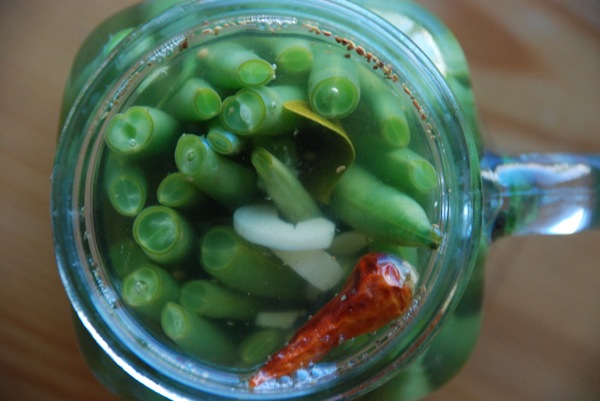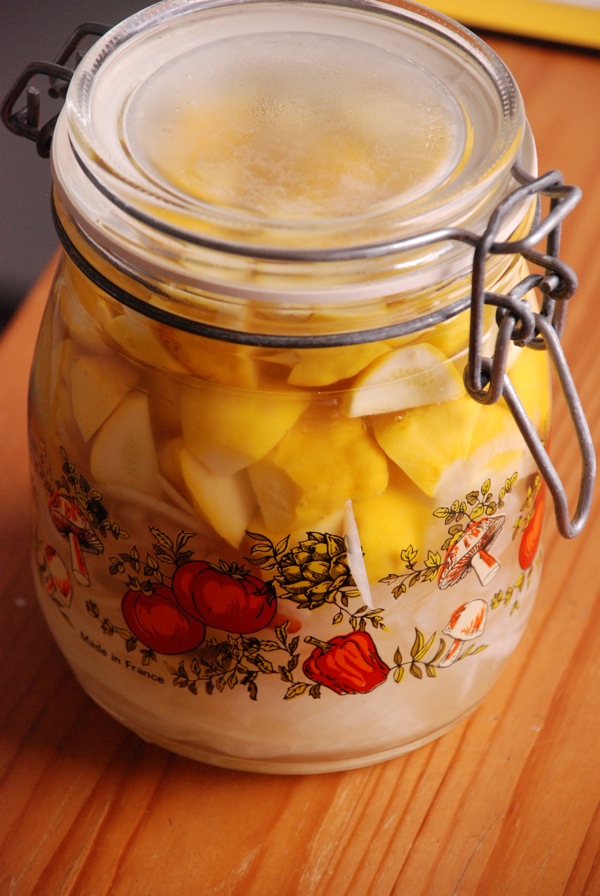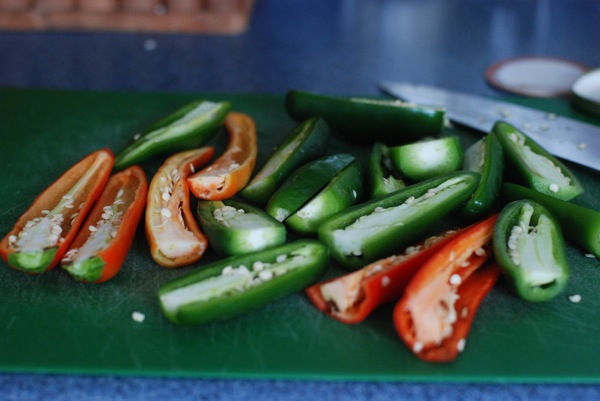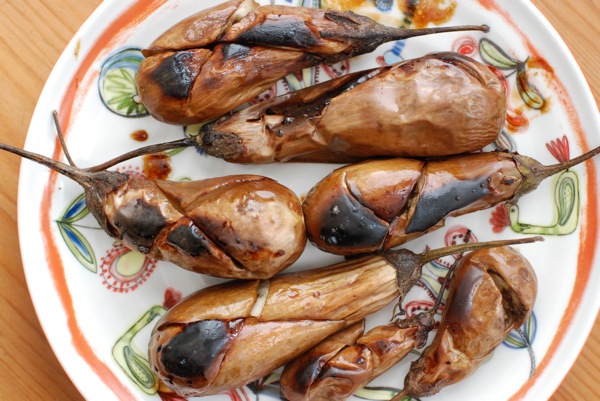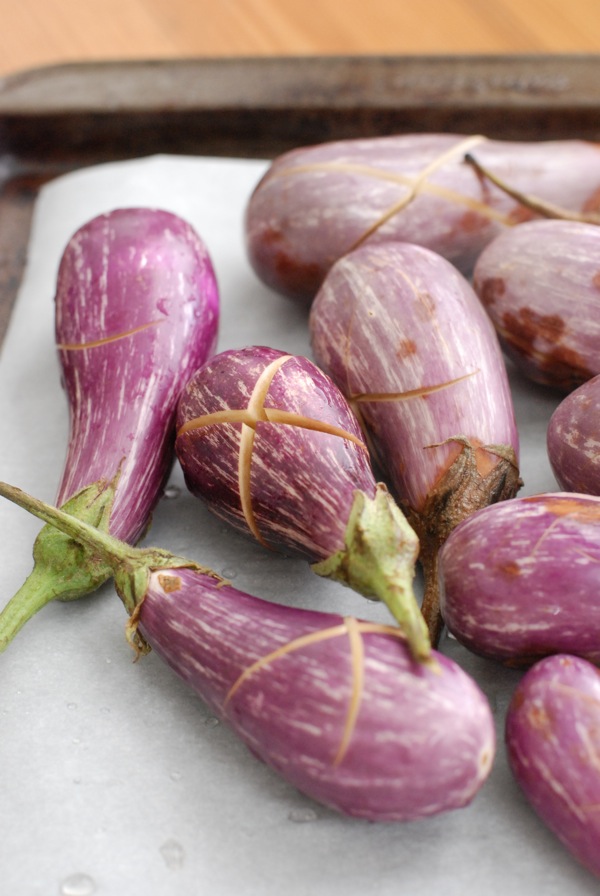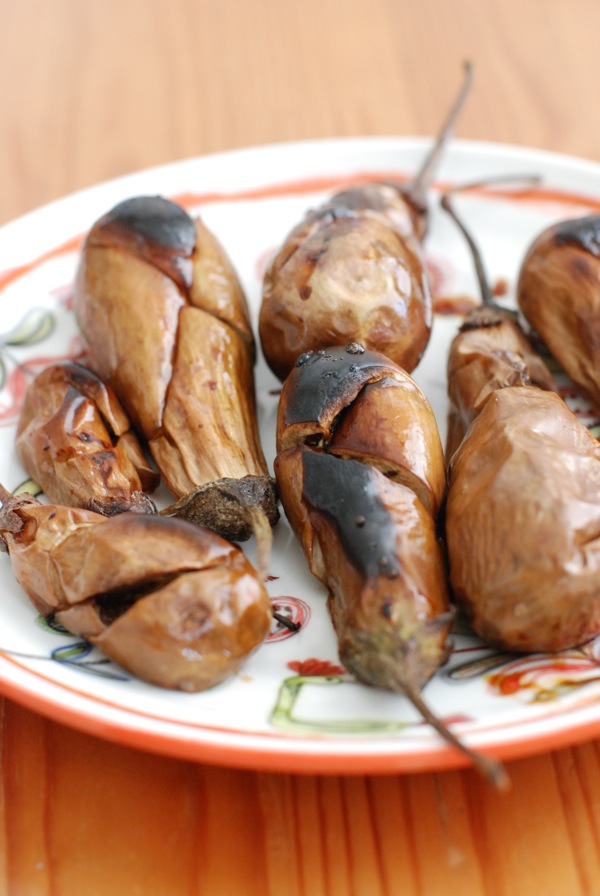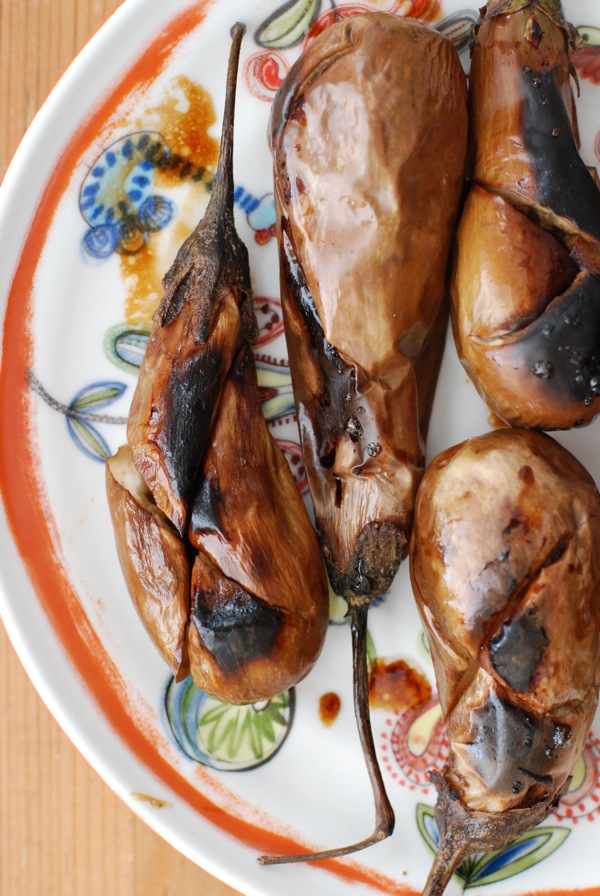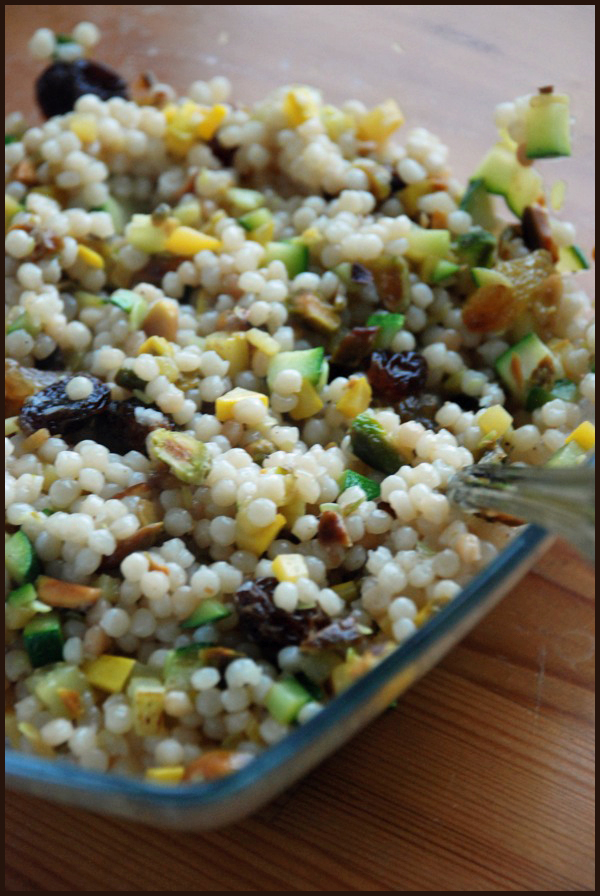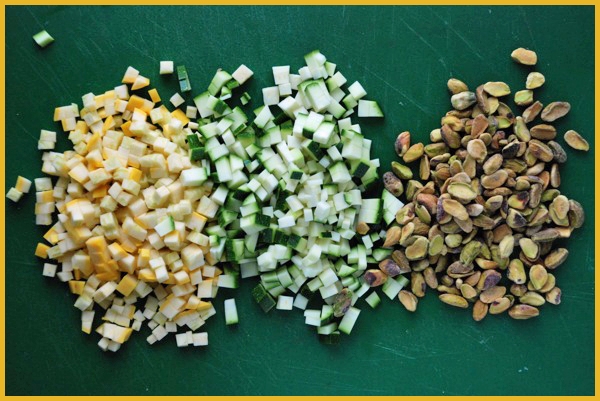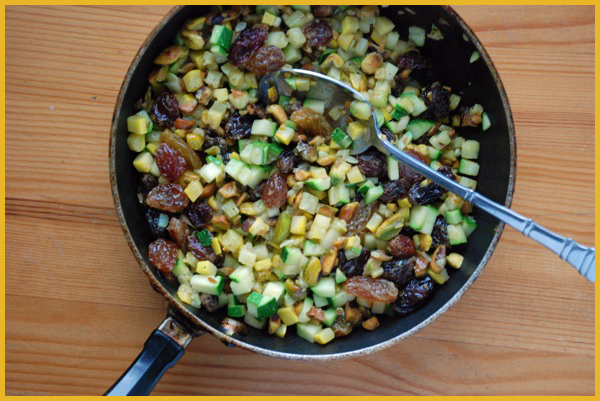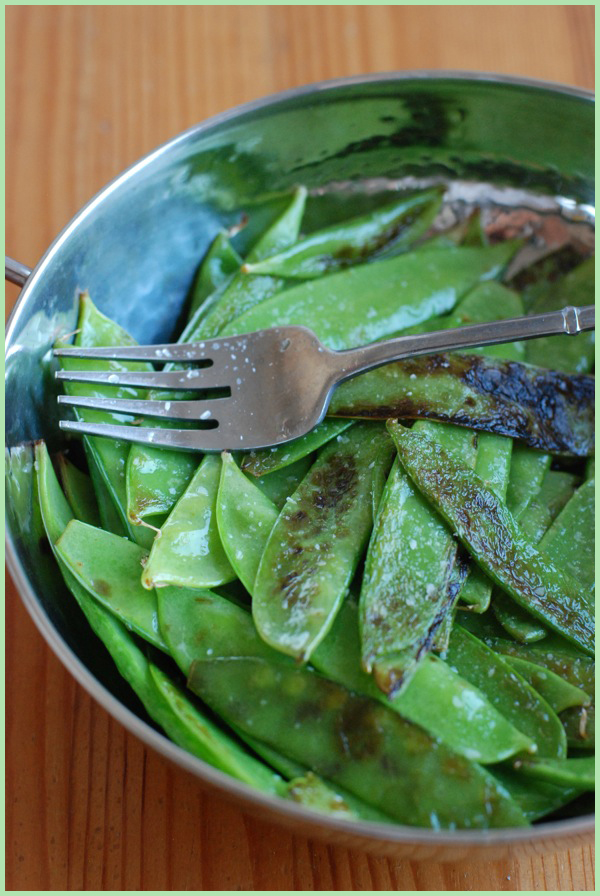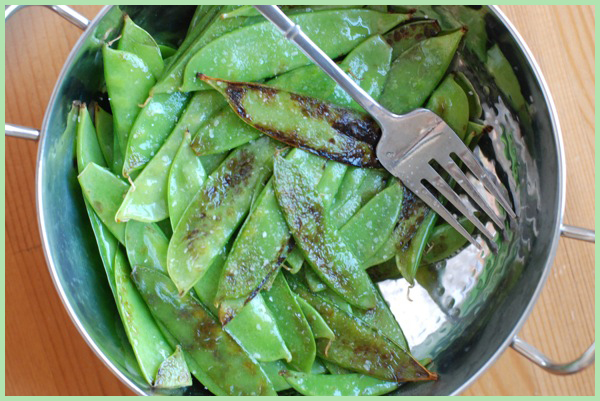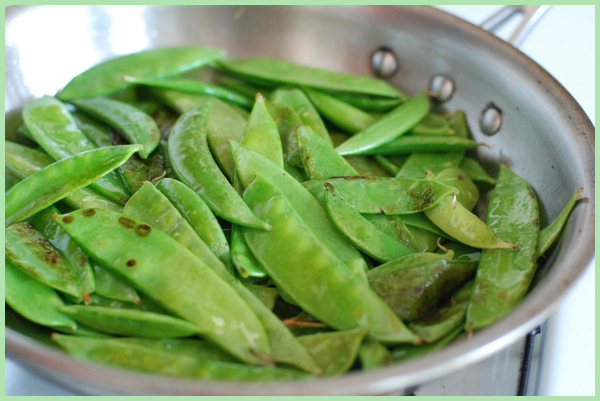Yes, yes, yes. I love pickles. Pickle anything, and I'll eat it. Cucumbers. Tomatoes. Green beans. Grapes. Cherries. Watermelon rind. Cauliflower. Beets. Eggplant. Are you bored yet? I could keep going.
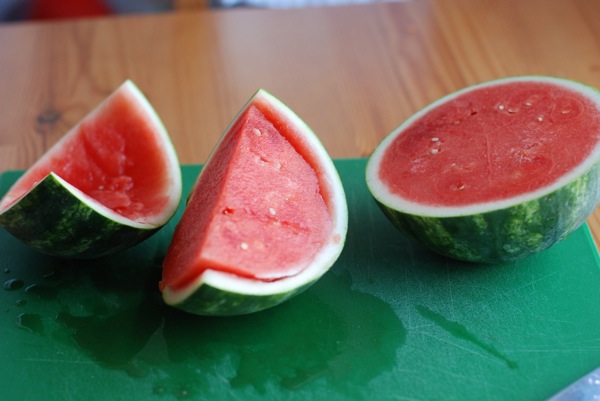
If you ask my fiancee how she feels about pickles, she'll tell you she's crazy for the sweet bread-and-butter variety, that she slaps 'em on every burger or dog she eats. She'll also tell you that I've gone mad, and that our house is turning into one big canning jar. Really. And you know what? She's kind of right. I have gone a bit nuts. We've got five quarts of pickles so far, and I'm not done yet. How could I be, when only cucs have been bottled? I've got three green tomatoes waiting to meet a similar fate, and two heads of cauliflower, some beets, and a bag of baby eggplants aren't far behind. Think this process too complicated or confusing? I'm here to set you straight.
All the pickles I'm jarring this year -- all 8 (gulp!) quarts of them -- will use one of two brines. To my taste, these brines are perfect: not too vinegary, not too salty. The first is my basic brine, in which I pickle just about everything. It has plenty (but not too much) dill and a double dose of kick from raw garlic and chile. The other is a brine I've taken from the Zuni Cafe Cookbook, a favorite of mine. From a recipe called "Carol's Pickled Onions," this brine is slightly sweeter, with intriguing notes from bay leaves and black peppercorns. I use it for onions, of course, but also for zucchini -- both large zucchinis, which I slice into coins, and the smaller "pattypan" variety, which I simply quarter. The zucchini and onions together make a great addition to a first course of breads and spreads.
In each of these recipes, the ratio of vinegar to water to salt needs to stay as is, so the vegetables will pickle properly. That said, feel free to alter the spices and seasonings as you wish. If you like a sweet pickle, add a couple tablespoons of sugar to the basic brine, no problem.
This year, I went bold -- I pickled some chilies in my basic brine. Haven't opened them yet, but they'd make a perfect accompaniment to vietnamese pho or any kind of kabob.
Basic Brine adapted from a recipe by Tara of Tea and Cookies
1 pound vegetables: green tomatoes, cucumbers, green beans, beets, and cauliflower are all great 2 quarts water 1 cup white vinegar 1/2 cup kosher salt 2 teaspoons celery seed 1 teaspoon dill weed or fresh dill 3 cloves minced garlic 2 small dried chilies 3-4 quart-size glass containers for pickling
Sterilize your jars, bands, and lids either by submerging them in water and bringing to a boil for 10 minutes, or by running through a full dishwasher cycle. Set sterilized jars, bands, and lids on clean towel while you prepare the brine and vegetables.
Combine water, vinegar, and salt in medium saucepan over medium-low heat, and allow salt to fully dissolve. Meanwhile, slice vegetables to desired size, and transfer to prepared jars. Distribute spices evenly among jars.
When brine comes to a boil and salt is no longer visible, turn off heat, and carefully and slowly pour brine over vegetables, leaving a 1/2-inch of "headspace" (space between the top of the liquid and the lip of the jar). Wipe rims of jars with damp towel or napkin, center lids on jars, and screw bands onto jars just until snug (not too tight).
If storing in the refrigerator, you're done -- just let the pickles develop flavor for a few days before eating them.
Instructions for processing jars for shelf storage:
In a large stockpot or canner, heat enough water to cover the jars by 1/2 an inch. When water is at a rolling boil, add jars and process for 10 minutes. Turn off heat, let water bath cool for about 5 minutes, and remove jars to countertop. Leave jars alone, and as they cool, their lids will pop into place. Wait 18 hours before checking to make sure the lids sealed; do this by removing the band and lifting the jar up by its lid. If the lid stays on the jar, the seal is strong. Pickles are shelf-stable and will keep for up to one year.
Carol's Onion Brine adapted from the Zuni Cafe Cookbook
headnote: This pickling recipe has not been tested for shelf stability, so I can these in small batches and store them in the refrigerator. While the jars take up valuable fridge space, they have the added benefit of not needing to be processed in a hot water bath like the pickles above.
12 ounces firm yellow onions, zucchini, or a mix 1 1/4 cups Champagne vinegar or white wine vinegar 1 1/4 cups water 2 tablespoons sugar 2 bay leaves 1-2 small dried chilies a few whole black peppercorns 2 teaspoons salt
Thoroughly clean 2 quart-sized jars or 1 larger jar.
Peel and slice onions into rings about 1/8 inch thick, discarding ends. If you have a mandoline, now's the time to use it. Discard any pieces that have discolored.
Combine vinegar, water, sugar, bay leaves, chilies, peppercorns, and salt in small saucepan. Bring to a simmer over medium-low heat, then turn heat up to medium and add onion rings and/or zucchini. Stir the crowded pan and let it return to a simmer. Simmer for just under 1 minute, then remove from heat.
Pour hot pickles and brine directly into jars (you may need a funnel for this). Cover and store in the refrigerator. Pickles will be ready in just about 24 hours, and get better as they sit. They'll keep in the brine for several months.

